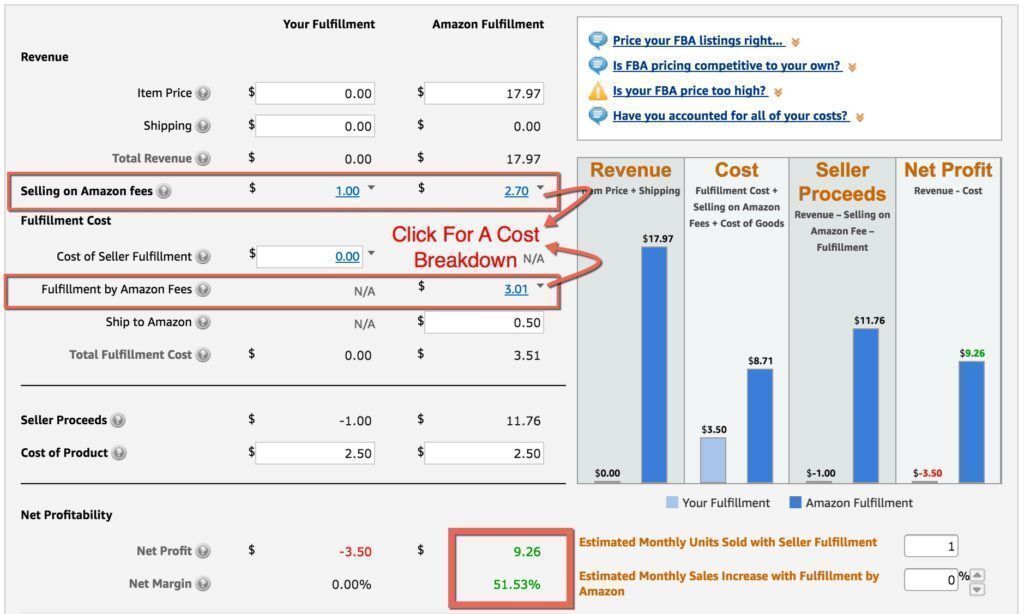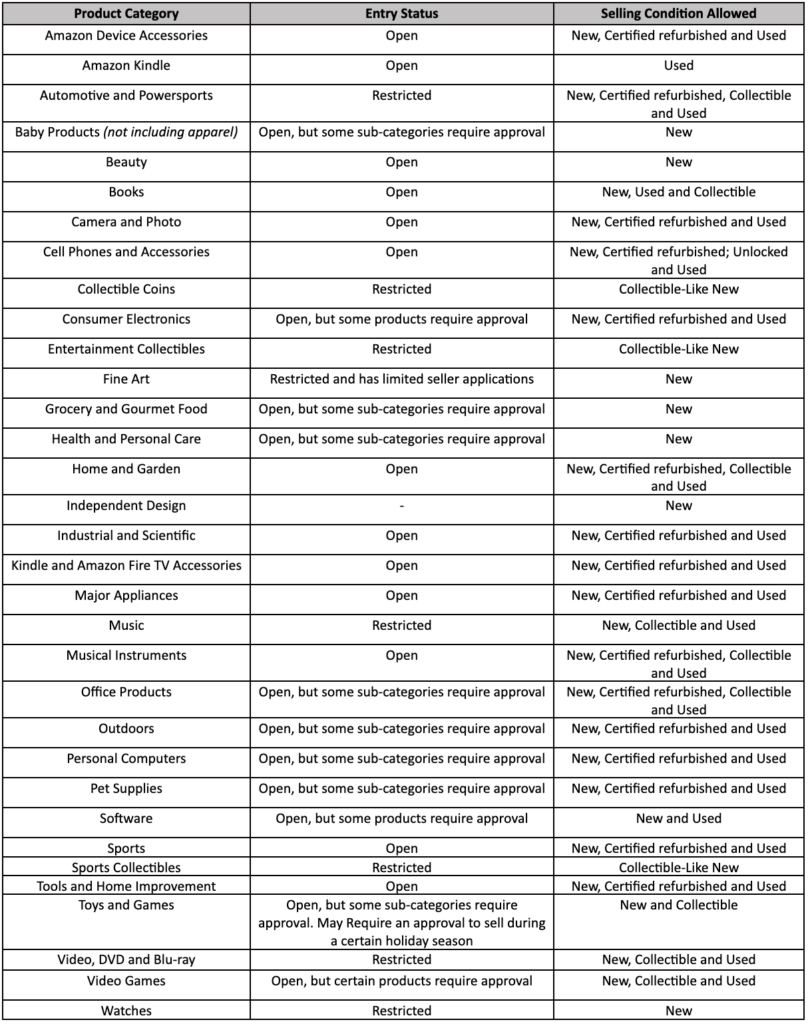Out of nearly 10 million sellers worldwide, only 130,000 third-party sellers surpassed $100,000 a year in sales. Why?
It’s all about choosing the right product.
This article, like a treasure box, is packed with all the tools and gems that you need to get on the right track to being a successful Amazon seller.
Amazon’s colossal success has forged the way for third-party sellers, beginners and experienced alike, to start their own business, with little to no initial financial commitment.
Selling on Amazon has become a worldwide tour-de-France, competing for the most profitable product in the marketplace. The “gold rush 2.0,” if you will. What is the right product to sell? This is – literally – the trillion dollar question.
Research is going to be critical to the financial success of your future endeavor. A good product can be hard to nail, running the gamut from too-niche-to-be-noticed all the way to overly-competitive. But there are ways to find the diamond in the rough.
We have prepared a slew of crucial tips that cover every angle to help you navigate your way to find the winning items for your business. They are divided into two:
🔻6 tips on how to choose the right eCommerce business model.
🔺10 tips on how to choose the most profitable product to sell.
Let’s get to brass tacks:
How to choose the right eCommerce business model:
1. Wholesale: buying bulk
Wholesale means purchasing products in bulk from other manufacturers, suppliers, or distributors and reselling them on Amazon. You buy at a certain rate, resell it at a higher price and the balance is your profit – minus the costs (shipping, Amazon fees.) Wholesale sellers, who also call their bulked goods, “case packs,” have the ability to store your inventory.
By selling wholesale, your business can have a much shorter kick-start than with private label sellers who sweat over establishing their brand and market education. You can even choose products that are already brand-proven (Kitchenaid, Samsung and so on) and ride on their popularity to assure sales.
However, well known brands mean stiff competition, which is why researching the right product to wholesale will be crucial.
At the same time, wholesale is a good way to examine the saleability of various products, as they can be bought cheaply. With a minor financial commitment, you can purchase a variety of products and see which ones sell best.
You can enter on Google the product you wish to sell, add “wholesale” and see what you find. Or you can browse on Alibaba, Global Sources, DHnet and see what they have wholesale-wise .
You can even expand your research further by visiting trade shows and buyers’ markets in various industries to find the perfect sellable item.
2. Using retail arbitrage
Retail arbitrage means purchasing highly discounted retail products and then reselling them on Amazon.
You will need hawk eyes to hunt down clearance deals and discounted products to sell for a profit that is worthwhile, especially as Amazon’s selling and shipping fees can bite a chunk off your sales: about 15%- 33%. For most, home and kitchen and toys are the best choice for arbitraging, as well as items that shine during the holiday seasons – Thanksgiving, Christmas and birthdays.
To save you time and effort, Amazon has developed pricing apps to help you find the most profitable bargain, apps you can download on your smartphone such as the Amazon seller app, Profit bandit and Scoutly, to name a few. You can scan each item with UPC codes and match them to current listings for that item on Amazon. These apps help you find out the average selling price of an item, the buyer demand (which will indicate how much inventory to purchase,) FBA costs – and then calculate your profit.

3. Dropshipping
Dropshipping is a popular business model because it is a relatively easy way to jumpstart your selling on Amazon without committing to too much time and money.
In this model, the seller takes orders on behalf of the manufacturer in this manner:




Dropshipping is a great option to avoid upfront payments. You don’t need to worry about purchasing and storing inventory however the profit margins are relatively low.

There are many good sides to this business model: it saves you time and money. Almost no start-up costs, you get the order from the customer and go straight to the manufacturer. No need to set up your own inventory and wait for it to be shipped to you.
To make life even easier, you can set up a fully automated dropshipping business. There are many apps and plugins online that make this a practically hands-off business. Just make sure you are going hand in hand with Amazon’s drop-shipping terms and conditions.
4. Private label products.
Private labeling means selling your own inventory and using your own packaging and brand name, except that the items themselves are made by an external supplier.
What’s really cool about private labeling is that you have a great product to sell, usually with higher profit margins and better control of the product cycle. On the flip side, you do have to navigate the difficulty and cost of managing your brand name (product exposure) as well as its marketing and inventory.
If this is the business model you choose to go with, keep your name, logo and color scheme consistent so customers get used to your presence in the marketplace. They will get to know you and trust you. And trust begets clientele.
Finding private label products to sell on Amazon is pretty much like working with wholesalers. Many suppliers have white label products in their goods, offering to add a custom label to the product with your name.
Of course branding your product and beating the competition isn’t a bed of roses. You will have to invest time, a solid financial investment and deep research until you launch your product and then grab the customer’s attention.
Private label products can be stocked and shipped directly to your customers. Of course, this can be done either via your own fulfillment setup, using FBA as your Amazon fulfillment service or a combination of both.
Nowadays with global chain supplies on the fritz, it’s also good to get a handle on inventory, and find ways never to be out of stock, especially during the holiday season.
5. Getting creative: POD (printing-on-demand)
POD products are items that are custom-made as soon as a shopper places an order. The product is then directly shipped from the manufacturer to the customer, cutting out the middleman and going through the usual distribution channels. Everything is handled by the POD suppliers from printing to shipping by using Amazon-approved POS vendors.
This is quite an exciting option as you don’t need much budget upfront and you can really build your own brand from scratch. Customize your own quirky or fun sayings, your artwork and unique design and print them on cups, towels, shirts or pillow cases where customers can fill their names, choose colors, pre-designed templates, etc.
These products must be sold via an Amazon-approved POD seller who is in line with Amazon’s (rather strict) production and shipping requirements.
If you don’t design the art on your own, you can outsource the work (for eg. Fiverr.) POD vendors usually make it easier for you by providing the necessary design software online so you can create anything you’d like through them.
6. Handmade by Amazon: selling your art on Amazon.
For the artists and crafters among us, the usual go-to selling site is Etsy. But many also turn to the Amazon Handmade section to reach a much wider audience.
Amazon Handmade is an entirely separate “artisan-only” platform, so the buyer has a more exclusive purchasing experience. It is also why Amazon Handmade has a more intricate, stricter process of approval, so customers know they have come to a separate, artistic platform where they can be assured they are getting goods that are actually handmade by the person/company selling them.
If you’re a pro-seller, take into account the monthly fee of $40. If you are an individual seller, it’s $1 per sale until a max of $39.99 per month. So figure out if this is worthwhile for you, the 15% profit Amazon takes from each sale and the costs of your raw material and fulfillment fees.
Though Handmade has only limited categories (soap, pottery, pillow cases, baby and more) once you are in line with their policies you get a much wider audience to sell your labors-of-love.
If you have calculated that this the a way to go and you use FBA, order packing, and shipping – all you will have to take care of is why you were here in the first place: creating and
expanding your art!

…and end of chapter one! Out of the menu, you’ve chosen the best meal with which to sell your product.
Now let’s finesse your meal a little bit more. Let’s discuss the gravy. Specificity is key when choosing a product to sell in the virtual marketplace. “The Devil is in the details,” as they say. In order to maximize our profits, we need to get to the highest resolution with regards to Amazon FBA and ecommerce in general.
🔺How to choose the most profitable product to sell.
1. Size and weight: Keep it light, preferably less than 5lbs.
Big and heavy products are harder to handle. The heavier the item, the more expensive to ship, especially from China to your shores and from your shores to the customer. Same thing goes for the size.
By picking something relatively small and light, you will see shipping costs and FBA fees are much more feasible.
On the other hand, too small can easily get squashed by mail. Best to pick something sturdy, durable and easy to hold, ideally up to 18” x 14” x 8”.
With an FBA calculator, you can actually run tests yourself to see if the item you chose to sell is profitable. You can play with different sizes, pricing points and shipping costs to maximize the analyses of your profit potential, as well as figure out the best price range for your chosen product

2. A key rule: master the SEO (Search Engine Optimization)
Look for a combination of top-ranking products that will indicate how well they sell, as well as listing quality scores (LQS), an in-house algorithm that determines the quality of a listing. It can improve the quality of your listing and keep you one step ahead of your competitors.
The LQS considers the length and keyword richness of a listing’s title, its bullet points, its description, even the number of pictures and the quality of the photos on the listing. Product listings are graded 1-10 with 10 being the best.
Click here to calculate your LQS
Your mission, “should you choose to accept it,” is to identify top selling products with low quality listing scores and then aim to improve them. Keywords are everything on Amazon. Step into the gold mine and find a profitable product niche with existing sellers who don’t maximize their SEO efforts, and then do the professional work, the due diligence that needs to be done to beat them to the buy box.
3. The price tag: The fairytale of Amazon and Goldilocks.
Research indicates that the best-selling products tend to hit that sweet spot between too-cheap-to-trust and too-expensive-for-my-budget. In other words, the Goldilocks pricing. The ideal price of any item you sell is $20-$70.
With high-end products, it’s harder to get the engine started as the conversion rates are usually lower for pricier products. You’ll have to fork over a lot more money at the beginning, which can be harder for most sellers.
4. Personally connecting with your product
Loving and connecting with your product will give you a better chance in the marketplace: sell what you love. Food you believe in as healthy, products you use and truly love, quirky items that you use daily and don’t understand how others don’t. Once you have that connection, your item descriptions and marketing tools will come from a real feel you have for the item – which reads as trustworthy to your customers. Consumers connect with this. Nothing sells like real passion!
5. Where is the high demand? The answer is in the keywords.
When choosing a product to sell on Amazon, keyword research is super important. Amazon’s algorithm recognizes your keyword as relevant for a particular product search and immediately places your product higher in the search results.
This is key info, as Amazon is one of the largest search engines in the world for eCommerce and general product inquiries. More than half of U.S consumers begin their purchases on Amazon. Ideally they enter the search term for what they want to purchase, find what they want and check out. The easier we make their search, the more you will be able to sell. And the secret ingredient to this success: keywords.
Identify all relevant keywords, make sure they jibe with Amazon keyword requirements, because they will play a vital part in increasing your sales, which is of course why we are here. Try to drum up as many keywords as you can. More keywords lead more customers to your product listing, leading, of course, to achieving more sales.
6. The fewer reviews, the better.
Reviews are a very necessary part of your product’s success. But stay away from products that have too many reviews, as that means fierce competition. If a product has fewer reviews (less than 200) with less than 5-stars will increase your chances of launching a product successfully, enabling to gain sales out of this specific potential industry.
7. Low competition: finding a niche.
Amazon product niches with high-growth opportunities are not easy to find – at least not immediately. But it’s important to understand the value of niches.
A “niche” in Amazon terms is a smaller area, a specialized sub-category of something – such as a unique product, a genre of books or films, tailor-made products for animals, etc.
The larger the categories of a specific market, the more competition it brings. Yes, they are easier to sell, but you can drown in the competition. Niches can rise and shine above the rest.
Let’s take pets, for example. 70% of U.S. households have pets. Many are cat and dog owners. The market is saturated with dog food and toys. OK, so let’s go further down the rabbit hole. Perhaps dogs that have only 3 legs, or tripawds, as they are called. Three legged dogs have more joint issues, so they need extra vitamins. That could be your niche. Or special ramps and tailored exercise gear as they need more exercise than our regular four-legged friends.
Check on Google, go to all social platforms and see where you can find entries to needs that are not met. Once you’ve conquered the smaller market, it gives you the leverage to eventually branch off into larger, more competitive categories.
8. Try to avoid breakable or electrical products
Before finding a product to sell, think first of the shipment. Any glass or electronic item can easily break, whether shipped from China or from your very own art shop. You can tape the word fragile on the package all you like, there are no guarantees the product will reach the customer intact.
If you do sell a breakable product, invest in its safety such as bubble wrap, bubble tape, foam inserts – be the world’s best packaging ninja! Make sure you pass what Amazon calls a “drop test.”
Same things goes for electronics or any item that has moving parts that can break from one little knock, or if not built correctly, can reach the customer DOA. Items sold with lithium batteries have a ton of shipment restrictions because of a high probability of exploding.
Same goes for anything patented or trademarked, these can get you on the wrong track of getting many returns and negative feedback. Remember, a bad account health can get you an ASIN suspension and can even close down your account.
9. Seasonal vs. ever-green (year-round) products
Seasonal of course can mean many things: Valentines day, Halloween, Christmas and Thanksgiving gifts. It can literally be the four seasons:
For spring – all things flowery from summer dresses to flower pots to hummingbird feeders, summer: summer dresses, sunglasses, sun block, winter: rain coats, rain boots and heavy blankets and the fall: back-to-school gear and pumpkin spice products. Even non-related products can be shaped to a particular season if you can analyze current trends, or come up with creative ways to change the way customers see some products during the holidays.
Seasonal products, as their name implies, have a short selling period, from two months to just a week. It sounds like getting the short stick on the deal – but it ain’t necessarily so. When the door closes in one hemisphere on your seasonal products, a window to another hemisphere opens up: i.e international sales. For example, if you’re selling summer clothes in the USA you could sell them later that year to Australia.
If you do go this route, start way before the peak of the season. Although products with a steady demand are usually a safer bet (routine sales, stable profit levels, increased online search volume), you can actually sell seasonal products all year round, or you can be the expected “fairy” who comes back for Halloween, Easter or Christmas – and then disappears.
10. Gated products
Any item that requires Amazon’s approval for sale is called a gated product. Amazon requires extra fees and performance checks on gated products to protect both customers and sellers. Getting these approvals is a real feat that takes time and money.
On the other hand, because many sellers stay away from gated products, there is less competition. Should you obtain these permissions, the terms and conditions can change many times, and if your finger is not on the pulse – you could be flagged for an Amazon suspension.

To conclude:
Finding that Amazon holy grail, the perfect product to sell, means patience, diligence and a lot of research. It means getting savvy with the marketplace, checking the Amazon Best Sellers Page, looking at the Amazon Trend Report, using Product Research Tools (an AMZScout product database, ) and doing Keyword Searches. All these tools are imperative to use when searching for the right product for you.
So now you have all the tools needed to find the perfect product! It is out there, waiting to be found. Start your SEO engine, find the best product, pluck it, and sell the hell out of it.
Sales forth, and prosper.




